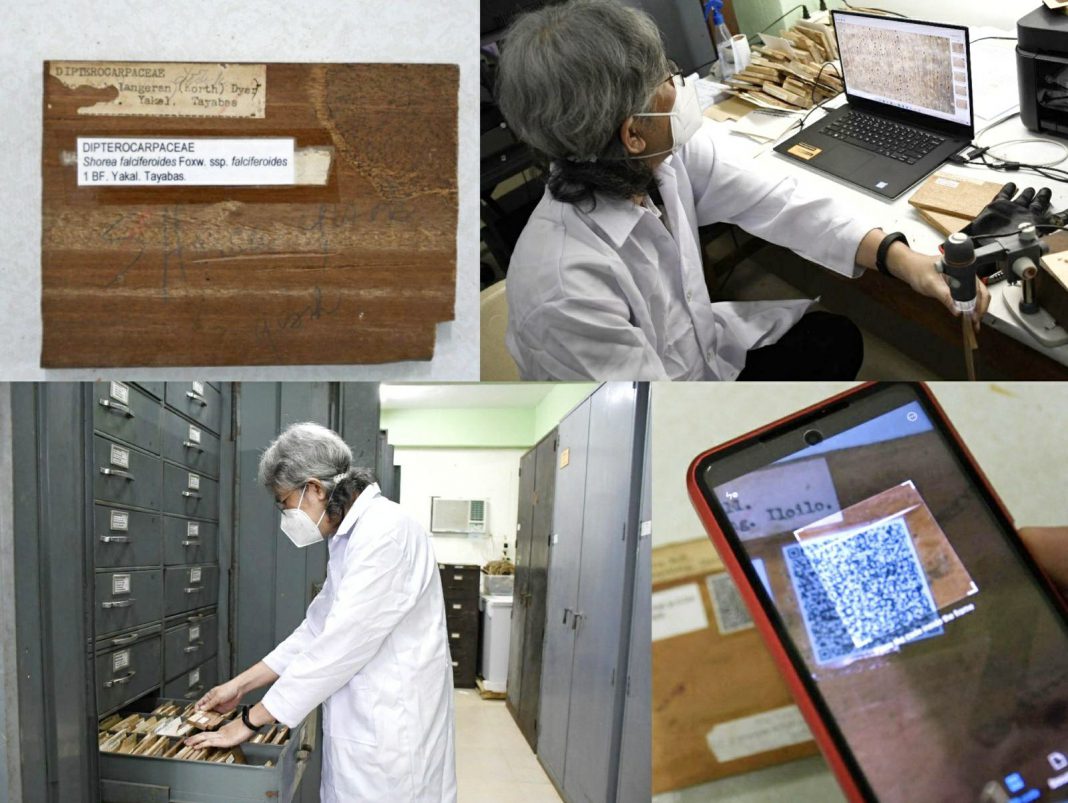DOST-FPRDI rolls out ‘digitization’ of various wood species
By Victoria “NIKE” De Dios
They say necessity is the mother of innovation. True to its mission, the DOST-Forest Products Research and Development Institute’s (DOST-FPRDI) ensures to preserve our diminishing “treasures”.
The assortment of wood blocks that for many years now have been contributing to archaeology, the wood-using industries, and the country’s anti-illegal logging campaign. The oldest of these blocks is 117 years old which DOST-FPRDI revealed.
It is elating to know that the DOST-FPRDI’s Herbarium and Xylarium (Wood Library) houses around 20,000 wood samples gathered from both local and foreign sources. A go-to place for archaeologists, foresters and students for their wood identification needs, it has the most complete wood collection in the Philippines with more than 4,000 tree species to date, and about 108 contributing countries.

“After the American occupation in the early 1900s, American experts left their collection of wood specimens gathered from their exploration of Philippine forests at the then Bureau of Forestry. During World War II, it was transferred to the Philippine Forest School (now UPLB-College of Forestry and Natural Resources), then to the DOST-FPRDI,” recalled Forester Glenn B. Estudillo of the Institute’s Material Science Division- Anatomy and Forest Botany Section.
“This is a very rare and valuable collection since some of the collected species no longer exist in the natural forests. We have to protect them because it will be hard to stockpile and impossible to replicate this collection again,” he said.
To better preserve the wood collection, DOST-FPRDI experts have recently began digitizing each sample. The process involves an inventory of the specimens and capturing high-resolution (20x) images using a digital microscope. The information and photos are uploaded and a QR code is assigned to each specimen for indexing and easy access.


“Every time we identify a piece of wood, we cut a thin portion off the sample. Doing this repeatedly will eventually ‘shrink’ the samples. Digitization will allow us to identify the wood species while preserving the wood blocks,” explained Estudillo.
Wood identification is the scientific process of establishing the identity of a wood specimen based on its anatomical, physical and structural properties.
“With the aid of highly-magnified photos, one can identify the species faster and more accurately than simply using the naked eye and a hand lens. Digitization also allows for greater accessibility because anyone with an internet connection and a smart phone will be able to access DOST-FPRDI’s digital wood library,” he shared.
The Institute’s wood identification service has been instrumental in the government’s anti-illegal logging campaign as it serves as basis for charges filed against loggers and shipowners that transport illegally-cut timbers.

It also helps archaeologists understand how our ancestors lived by identifying wood specimens recovered from their study sites. Likewise, it is crucial to clients in the construction, furniture and handicraft sectors who need assurance on the identity of their wood materials.
Estudillo concludes “In this digital age, DOST-FPRDI promises to adapt in order to preserve these priceless specimens. We are currently in the process of completing the digitization while also applying for a copyright. We hope to share our digital wood library to the public soon.”














